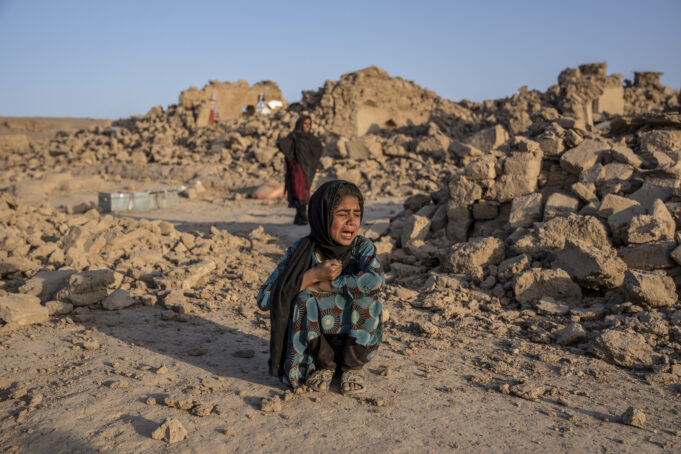A powerful earthquake struck western Afghanistan again on October 15, making it the fourth to hit the impoverished region since October 7, causing more suffering for families left with little to survive on as the hard winter approaches, UN agencies have reported.
The latest, 6.3 magnitude earthquake struck areas northeast of Herat city the morning of October 15.
According to the UN Office for Coordination of Humanitarian Affairs (OCHA), as of October 16 evening, two people were reported to have been killed and over 150 injured in the latest quake.
In total, about 1,500 people have died, and a further 2,000 injured.
Race against time
Daniel Peter Endres, acting UN Humanitarian Coordinator for Afghanistan, described the situation there as “a race against time” for aid organizations to deliver assistance before the onset of winter.
“These earthquakes have struck some of the most vulnerable communities in Afghanistan, they have already been grappling with decades of conflicts and under development,” he told journalists in New York, via video link.
“The affected communities have little resilience to cope with the multiple and simultaneous shocks, and especially with the cold winter coming, when households have limited food resources and are most constrained in capacity.”
Nightly temperatures have dipped considerably, he said, noting that many whose homes were damaged are sleeping outside, afraid their dwellings might collapse completely.
Initial response plan
He mentioned that local communities and aid organizations are helping those in need by providing food and non-food relief items, including tents, blankets and heating supplies. However, more help is needed.
The humanitarian community in Afghanistan has created an initial response plan for recovery, focusing on 114,000 people whose homes were destroyed or badly damaged. The plan may be revised as necessary.
Mr. Endres said the crisis response will be absorbed within the 2023 Afghanistan Response Plan, which is itself severely underfunded.
Impoverished region
The powerful earthquakes have added to “a mountain of hardship” facing Afghans, the UN World Food Program (WFP) said on October 16.
“These are communities that are already barely able to feed themselves, and every one of these crises pounds them back into utter destitution,” added Philippe Kropf, an agency spokesperson in Afghanistan, who went to affected villages after the first earthquakes struck in early October.
“This comes on the back of nearly 40 years of near uninterrupted conflict,” he stressed, “of high levels of food insecurity, of five years of drought or drought-like conditions—and an economic downturn two years ago that has destroyed livelihoods and jobs.”
Damage till date
About 43,000 people (7,165 families) are reported to have been directly affected by the earthquakes and their aftershocks across the region, according to OCHA. More than 3,300 homes are reported to have been destroyed, 2,100 severely damaged, and 1,700 moderately damaged.
Aid facilities, homes, water sources, and offices have also sustained damage of varying severity, and engineering assessments are ongoing to ascertain structural damage, and to allow traumatized residents to return to their homes. (UN News)













